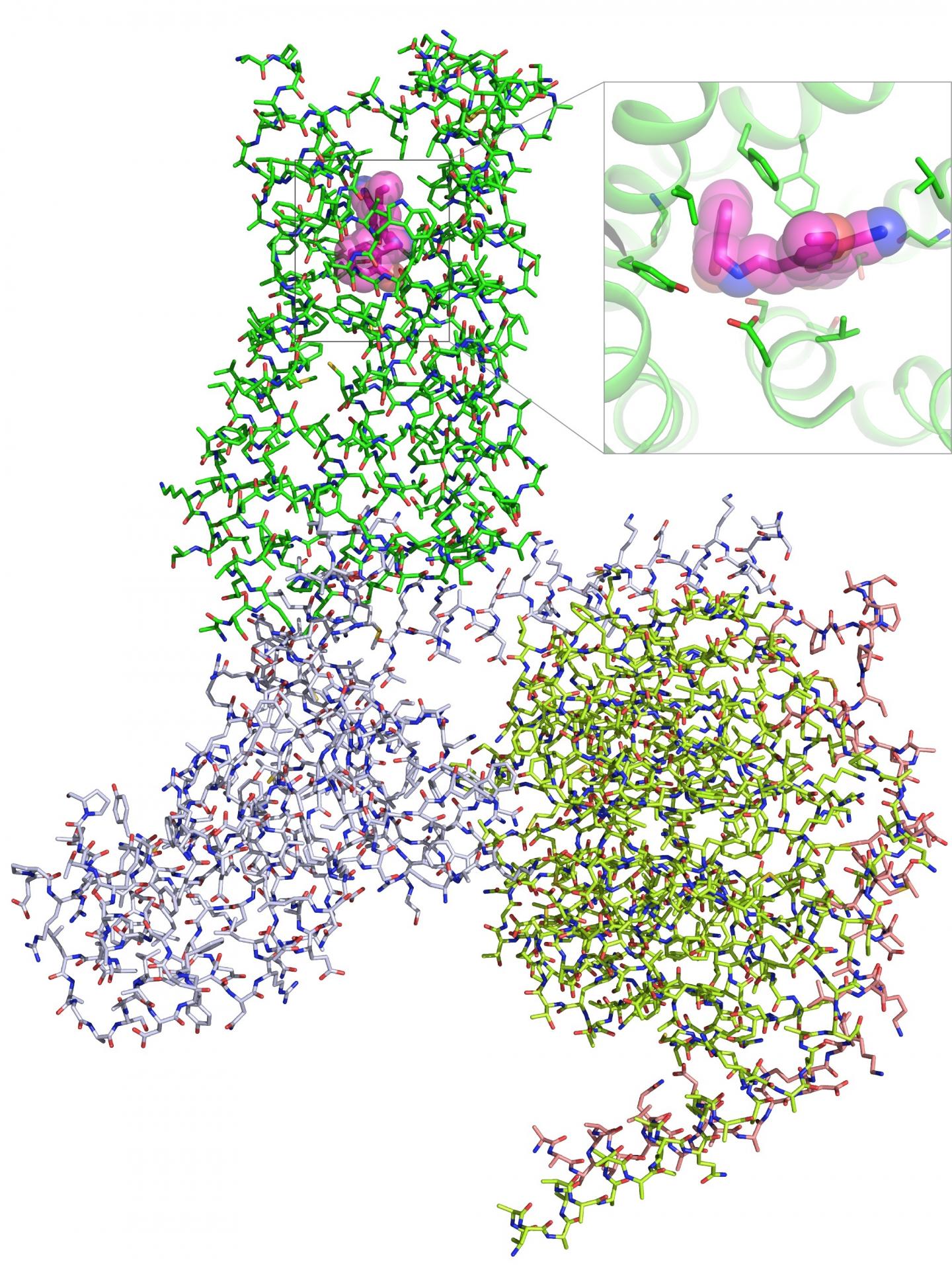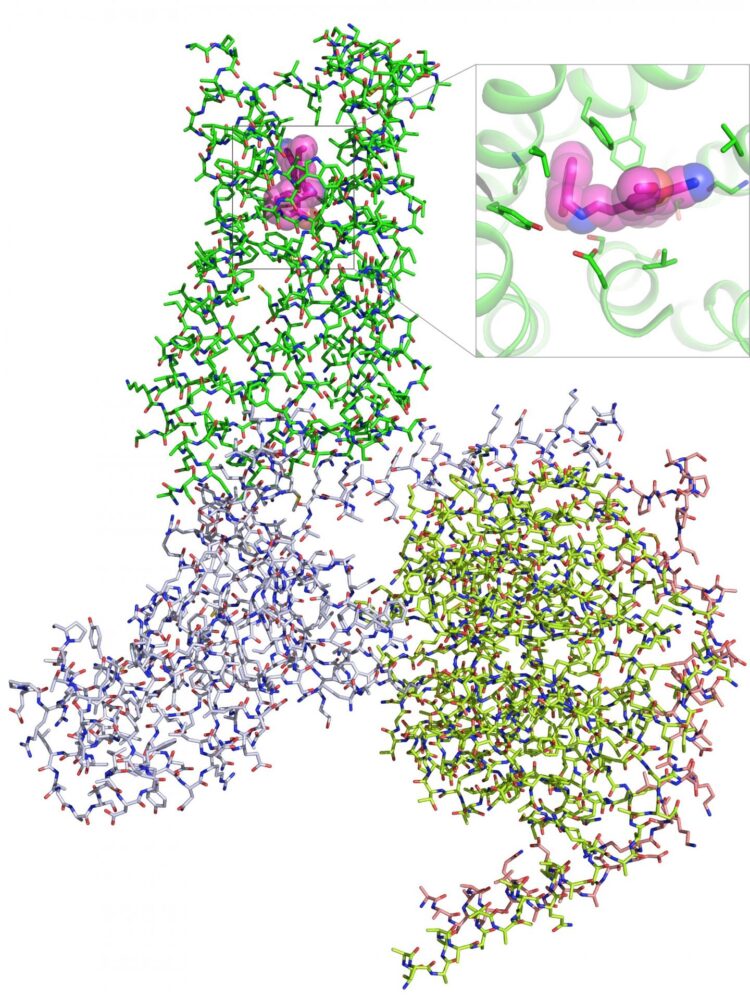This work, published in Cell and led by the UNC-Chapel Hill lab of Bryan L. Roth, MD, PhD, sets the stage for the discovery of new kinds of antidepressants, anti-anxiety drugs, and treatments for substance use disorders

Credit: Roth Lab (UNC School of Medicine)
CHAPEL HILL, NC – September 17, 2020 – Psychedelic drugs such as LSD, psilocybin, and mescaline cause severe and often long-lasting hallucinations, but they show great potential in treating serious psychiatric conditions, such as major depressive disorder. To fully investigate this potential, scientists need to know how these drugs interact with brain cells at the molecular level to cause their dramatic biological effects. Scientists at UNC-Chapel Hill and Stanford have just taken a big step in that direction.
For the first time, scientists in the UNC lab of Bryan L. Roth, MD, PhD, and the Stanford lab of Georgios Skiniotis, PhD, solved the high-resolution structure of these compounds when they are actively bound to the 5-HT2A serotonin receptor (HTR2A) on the surface of brain cells.
This discovery, published in Cell, is already leading to the exploration of more precise compounds that could eliminate hallucinations but still have strong therapeutic effects. Also, scientists could effectively alter the chemical composition of drugs such as LSD and psilocybin – the psychedelic compound in mushrooms that has been granted breakthrough status by the FDA to treat depression.
“Millions of people have taken these drugs recreationally, and now they are emerging as therapeutic agents,” said co-senior author Bryan L. Roth, MD, PhD, the Michael Hooker Distinguished Professor of Pharmacology at the University of North Carolina School of Medicine. “Gaining this first glimpse of how they act at the molecular level is really important, a key to understanding how they work. Given the remarkable efficacy of psilocybin for depression (in Phase II trials), we are confident our findings will accelerate the discovery of fast-acting antidepressants and potentially new drugs to treat other conditions, such as severe anxiety and substance use disorder.”
Scientists believe that activation of HTR2A, which is expressed at very high levels in the human cerebral cortex, is key to the effects of hallucinogenic drugs. “When activated, the receptors cause neurons to fire in an asynchronous and disorganized fashion, putting noise into the brain’s system,” said Roth, who holds a joint faculty appointment at the UNC Eshelman School of Pharmacy. “We think this is the reason these drugs cause a psychedelic experience. But it isn’t at all clear how these drugs exert their therapeutic actions.”
In the current study, Roth’s lab collaborated with Skiniotis, a structural biologist at the Stanford University School of Medicine. “A combination of several different advances allowed us to do this research,” Skiniotis said. “One of these is better, more homogeneous preparations of the receptor proteins. Another is the evolution of cryo-electron microscopy technology, which allows us to view very large complexes without having to crystalize them.”
Roth credits co-first author Kuglae Kim, PhD, a postdoctoral fellow in his lab, for steadfastly exploring various experimental methods to purify and stabilize the very delicate serotonin receptors.
“Kuglae was amazing,” Roth said. “I’m not exaggerating when I say what he accomplished is among the most difficult things to do. Over three years in a deliberate, iterative, creative process, he was able to modify the serotonin protein slightly so that we could get sufficient quantities of a stable protein to study.”
The research team used Kim’s work to reveal the first X-ray crystallography structure of LSD bound to HTR2A. Importantly, Stanford investigators then used cryo-EM to uncover images of a prototypical hallucinogen, called 25-CN-NBOH, bound together with the entire receptor complex, including the effector protein Gαq. In the brain, this complex controls the release of neurotransmitters and influences many biological and neurological processes.
The cryo-EM image is like a map of the complex, which Kim used to illustrate the exact structure of HTR2A at the level of amino acids – the basic building blocks of proteins such as serotonin receptors.
Roth, a psychiatrist and biochemist, leads the Psychoactive Drug Screening Program, funded by the National Institute of Mental Health. This gives his lab access to hallucinogenic drugs for research purposes. Normally, these compounds are difficult to study in the lab because they are regulated by the Drug Enforcement Agency as Schedule 1 drugs.
Roth and colleagues are now applying their findings to structure-based drug discovery for new therapeutics. One of the goals is to discover potential candidates that may be able offer therapeutic benefit without the psychedelic effects.
“The more we understand about how these drugs bind to the receptors, the better we’ll understand their signaling properties,” Skiniotis says. “This work doesn’t give us the whole picture yet, but it’s a fairly large piece of the puzzle.”
###
This work was funded by the National Institutes of Health (grants R37DA04567 and R01MH112205) and a cooperative agreement from the Defense Advanced Research Projects Agency (HR0011-20-2-0029). The researchers also received support from the National Cancer Institute and the National Institute of General Medical Sciences. This research used resources of the Advanced Photon Source, a US Department of Energy (DOE) Office of Science user facility operated for the DOE Office of Science by Argonne National Laboratory.
Along with Roth, Skiniotis, and Kim, other others of the Cell paper are Tao Che, PhD, a Roth lab postdoctoral fellow at the time of this research and now assistant professor at St. Louis University; Stanford University staff scientist Ouliana Panova, PhD; Jeffrey DiBerto, Roth lab graduate student; Jiankun Lyu, PhD, postdoctoral fellow at the University of California-San Francisco; Brian Krumm, PhD, a Roth lab postdoctoral fellow; Daniel Wacker, PhD, a Roth lab postdoctoral fellow at the time of this research and now assistant professor at the Icahn School of Medicine at Mount Sinai; Michael Robertson, PhD, and Alpay Seven, PhD, both postdoctoral fellows at Stanford; David Nichols, PhD, Roth lab researcher and emeritus Robert C. and Charlotte P. Anderson Distinguished Chair in Pharmacology and Distinguished Professor of Medicinal Chemistry and Molecular Pharmacology at the Purdue University College of Pharmacy; and Brian Shoichet, PhD, professor of pharmaceutical chemistry at UC-San Francisco.
Media Contact
Mark Derewicz
[email protected]
Original Source
http://news.
Related Journal Article
http://dx.





